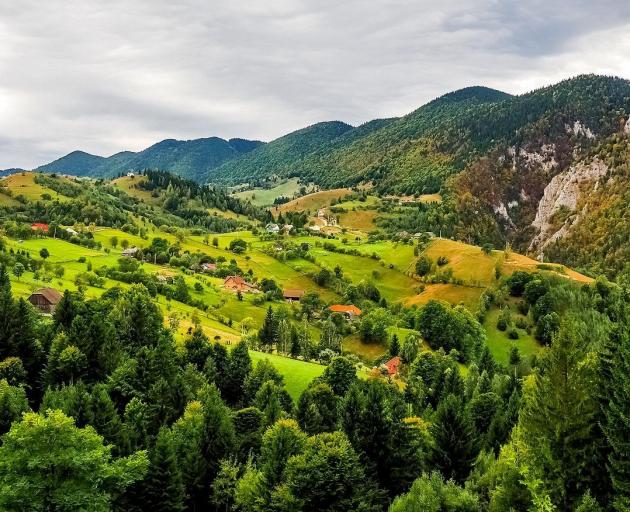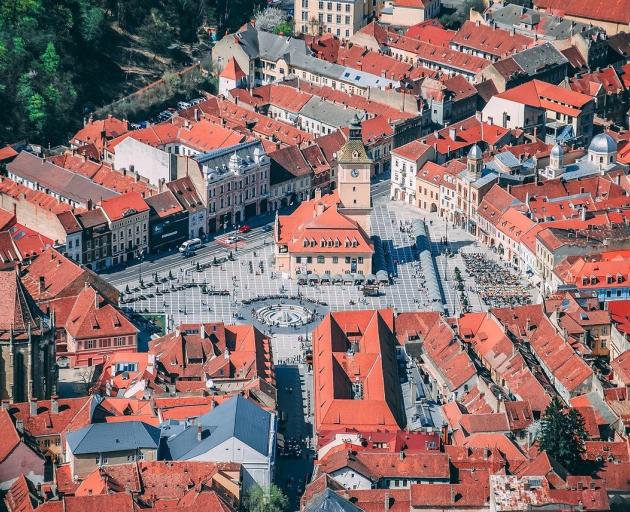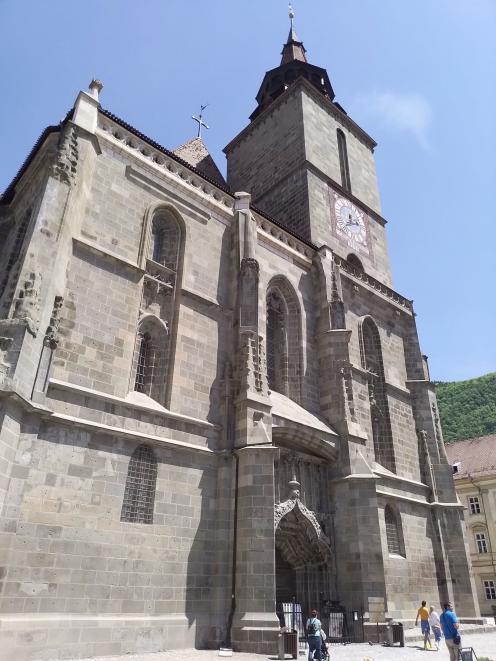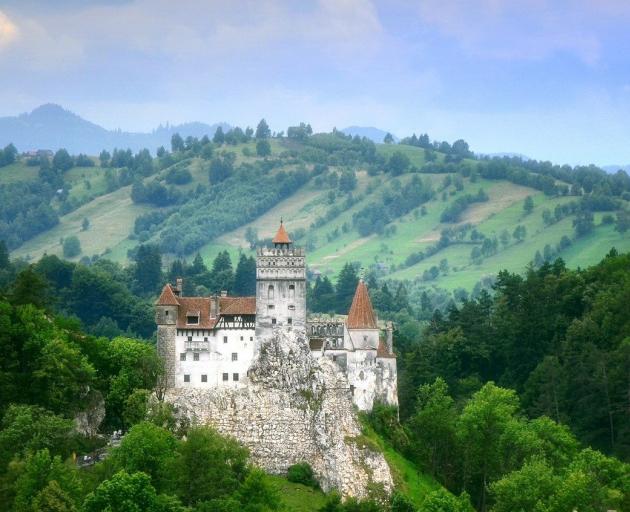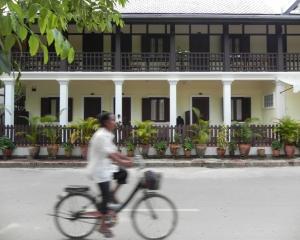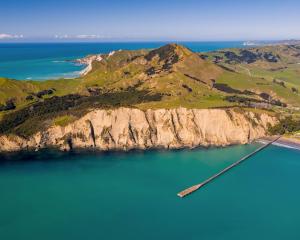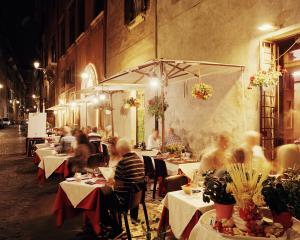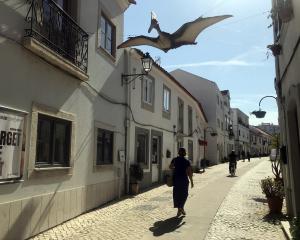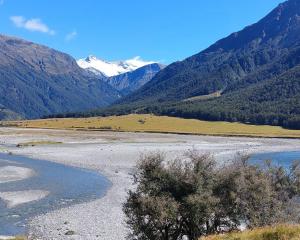Three hours north of Romania’s capital Bucharest, Transylvania’s pulling power draws equally from mythology as much as reality, writes Mike Yardley.
For horror fans, the region is synonymous with the towering mythological figure of Dracula, inspired by the 15th-century ruler, Vlad the Impaler. But beyond blood-curdling characters, I was surprised to discover on my long Balkan adventure with Trafalgar Tours that Transylvania is a scenic thriller. Bordered to the south and east by the arc of the magnificent Carpathians, Europe’s third-longest mountain range, fortified church steeples poke through the tree tops of fairy-tale forests, while charismatic medieval Saxon towns and hilltop castles exude sheer Gothic drama.
There are so many layers to Transylvania’s back-story, a possession of the Hungarian king from the 10th century. The region has been the subject of mighty power struggles for 1000 years, with Hungary only renouncing its territorial claims to this part of Romania in 1996. There’s a strong Saxon or German influence to the region, sparked by the Hungarian monarchy luring blue-eyed blondes from the Lower Rhine, Flanders and Moselle to the region, who promised them land and other liberties in return for their services to the battlefield against the Ottomans.
Our first stop was in Sinaia, drenched in verdant forest and valley greens of the Carpathian Mountains, on an old medieval road across the southern Carpathians to Transylvania.
King Carol I of Romania fell in love with the majestic mountain scenery and commissioned the construction of a royal hunting preserve and his summer residence, Peles Castle, in 1873. Ten years in the making, this romantically inspired pleasure palace is a blend of neo-renaissance and gothic revival, not dissimilar to Bavaria’s Neuschwanstein Castle and its spiky towers. Nudging the edge of the dense forest the immaculately maintained terraced gardens cascade down from the castle, lavishly adorned with Carrara marble statues and guarded by carved lions.
Remaining a summer residence of the royal family until the monarchy’s demise in 1947, Peles was the first European castle to generate its own electricity. Its 160 rooms are adorned with the finest examples of European art, Murano crystal chandeliers, German stained-glass windows and Cordoba leather-covered walls. It’s a splendidly attractive castle, now a national monument, and if it looks somewhat familiar, you’ve probably been watching far too many schmaltzy Hallmark Christmas movies, shot on location.
Further north, Brasov is a show-stopper, a walled medieval town populated by the Saxons of Transylvania. Also known by its Saxon name Kronstadt, Brasov grew to prominence from the 13th century when Saxons migrants arrived and fortified their settlement with walls and watchtowers, developing a prosperous trade centre for the Austro-Hungarian Empire. Brasov’s baroque heart is strikingly well preserved, seemingly cushioned from the outside world by the lofty mountains fringing the town.
Top sights include the Black Church, a 600-year-old behemoth which happens to be the largest gothic church in Eastern Europe. It was in 1689 that the church got its name, when it was nearly consumed by a huge fire caused by the Austrian army. The legacy of its black smoky walls inspired the name. The church is situated next to the gloriously Instagrammable Council Square, Brasov’s beating heart, flanked in pastel-hued baroque buildings, awash with al fresco bars and eateries. In the middle of the square, the circa-1420 Council House, crowned with Trumpeter’s Tower. Back in the day it served as a trusty watchtower for approaching barbarians.
There’s a cute little lane, Strada Sforii, that snakes between the medieval merchant houses. It’s reputed to be the narrowest street in Europe, just 111cm wide and 80 metres long. Brasov loves its street food. Hot-foot it to the vendors selling covrigi, hot pretzels covered in sesame and poppy seeds. For a sweet snack, sink your teeth into a kurtoskalac, a deliciously tall chimney cake. Originating in Transylvania, the dough is coated with oil, cinnamon and sugar, and when baked it creates a crunchy, sugary outside crust, with a soft, fluffy dough inside. If a doughnut canoodled with a churro, this would be the love child. Many vendors pimp them up with whipped cream, sprinkles, gelato ... you name it. Work it off by striking out on a one-hour wooded hike to the top of Tampa Mountain, or take a lazy cable-car ride. The views are stupendous, alongside the Hollywood-style Brasov sign.
Just 30 minutes’ drive from Brasov is the poster-child of Transylvania, Bran Castle — aka Dracula’s Castle. Bram Stoker’s classic novel apparently cast the brooding gothic style of Bran Castle as the intimidating abode of his bloody-thirsty character Count Dracula, who was inspired by one of the region’s real-life rulers, Vlad Tepes, better known as Vlad the Impaler. He was the ruler of the Wallachia region in the 15th century, notorious for his squeamishly barbaric forms of punishment, including eye-gouging, amputation, scalping and skinning.
But one of Vlad’s top-shelf specialties was vertically impaling his enemies, with a pole shoved up their lower orifice, exiting through the upper body or mouth. If you had really displeased Vlad, you’d be impaled upside down, with the stake rounded at the end rather than pointy, to avoid a quick death. Our guide referenced a massacre in Brasov, where Vlad requested that a table be set up amid those being impaled. Next to where his victims were writhing and moaning on wooden stakes, he sat down for lunch, dipping his bread in the blood pouring out of the impaled. His father’s name was Vlad Dracul, which in Romanian translates to Vlad the Devil, also served as inspirational blood-lusting fodder for Bram Stoker.
Like a mini-Disneyland for goths, visitors swoon over the sky-scratching turrets and towers of Bran Castle, an imperious hilltop fortress that chimes perfectly with Stoker’s description of Dracula’s castle — ‘‘high above a valley perched on a rock with a flowing river below’’. I half expected to find the fanged one lurking in the spiral stone staircases that wind up the medieval turrets.
Dating back to the 14th century, the Saxons built the stone castle at their own expense, used in defence against the Ottoman Empire and later becoming a customs post on the mountain pass through Bran Gorge, while it was regularly refortified as a military bulwark over the centuries. In 1920 the city of Brasov turned Bran Castle over to Queen Marie of Greater Romania, who restored the castle as a royal summer residence. Following the communist era, the castle was returned to the descendants of the royal family, who have turned it into a museum.
Beyond the fairy-tale architecture and literary credentials, it’s the untamed alpine wilderness that enchanted me the most — bucolic hiking nirvana. The ravishing scenic beauty of the region was a great detox of hop-scotching through so many Balkan cities. Transylvania is home to some rather menacing biters — 6500 brown bears, about 40% of Europe’s brown bear population, plus more than 2500 wolves. You have been warned! Conservationists rave about the region’s biodiversity.
King Charles is a longtime fan, with two rural properties in Transylvania promoting conservation and sustainability. His biodiverse meadows produce some very good honey, which is proudly served at Buckingham Palace.
Speaking of bears, while staying in the serene mountain resort village of Poiana Brasov, my cellphone blasted an emergency text alert just as I was going to sleep. It was a bear alert, warning residents that a brown beer had been spotted, roaming at large on the streets of the mountain village. It certainly made for a refreshing change from earthquake, tsunami and Covid lockdown text alerts! Thankfully, no-one was mauled by the bear on the loose.
